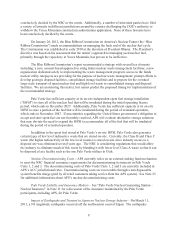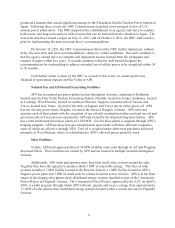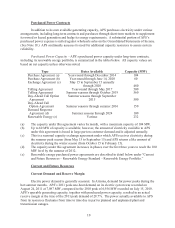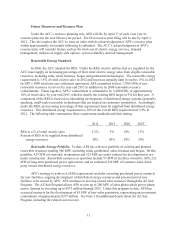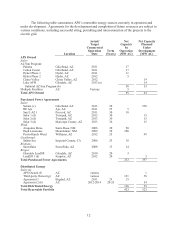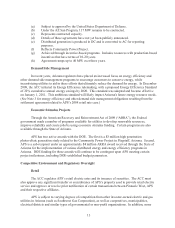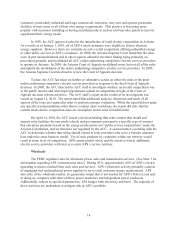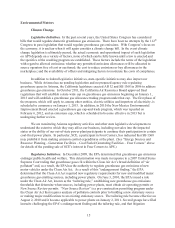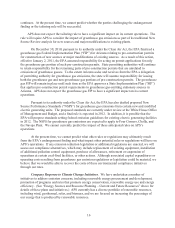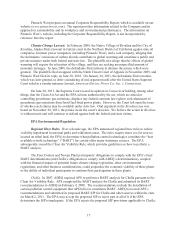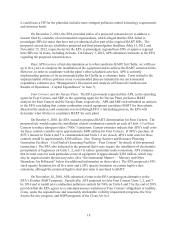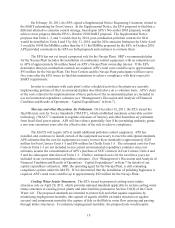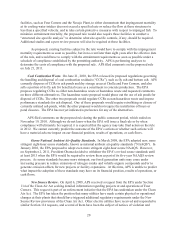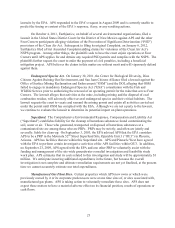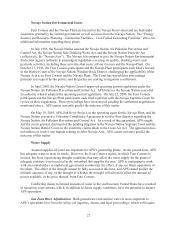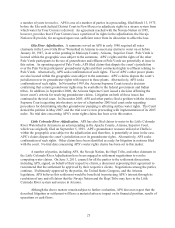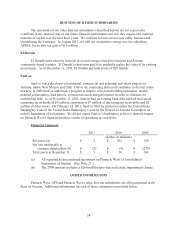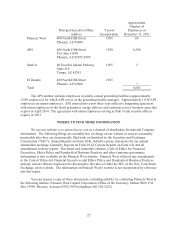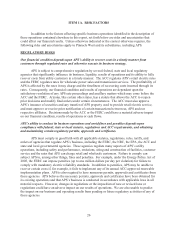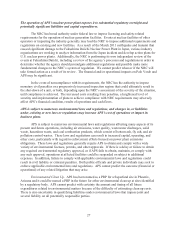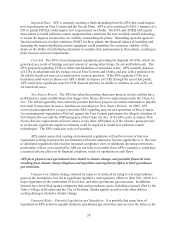APS 2011 Annual Report Download - page 42
Download and view the complete annual report
Please find page 42 of the 2011 APS annual report below. You can navigate through the pages in the report by either clicking on the pages listed below, or by using the keyword search tool below to find specific information within the annual report.18
it could issue a FIP for the plant that includes more stringent pollution control technology requirements
and emission limits.
On December 2, 2011, the EPA provided notice of a proposed consent decree to address a
lawsuit filed by a number of environmental organizations, which alleged that the EPA failed to
promulgate FIPs for states that have not yet submitted all or part of the required BART SIPs. The
proposed consent decree establishes proposed and final promulgation deadlines (May 15, 2012 and
November 15, 2012, respectively) for the EPA to promulgate regional haze FIPs or approve regional
haze SIPs for 34 states, including Arizona. On January 3, 2012, APS submitted comments to the EPA
regarding the proposed consent decree.
Once APS receives a final determination as to what constitutes BART for Cholla, we will have
up to five years to complete the installation of the equipment and to achieve the BART emission limits.
However, in order to coordinate with the plant’s other scheduled activities, APS is currently
implementing portions of its recommended plan for Cholla on a voluntary basis. Costs related to the
implementation of these portions of our recommended plan are included in our environmental
expenditure estimates (see “Management’s Discussion and Analysis of Financial Condition and
Results of Operations – Capital Expenditures” in Item 7).
Four Corners and the Navajo Plant. The EPA previously requested that APS, as the operating
agent for Four Corners, and SRP, as the operating agent for the Navajo Plant, perform a BART
analysis for Four Corners and the Navajo Plant, respectively. APS and SRP each submitted an analysis
to the EPA concluding that certain combustion control equipment constitutes BART for these plants.
Based on the analyses and comments received through EPA’s rulemaking process, the EPA will
determine what it believes constitutes BART for each plant.
On October 6, 2010, the EPA issued its proposed BART determination for Four Corners. The
proposed rule would require the installation of post-combustion controls on each of Units 1-5 at Four
Corners to reduce nitrogen oxides (“NOx”) emissions. Current estimates indicate that APS’s total costs
for these controls could be up to approximately $400 million for Four Corners. If APS’s purchase of
SCE’s interest in Units 4 and 5 is consummated and Units 1-3 are closed, APS’s total costs for these
controls would be approximately $300 million. (See “Energy Sources and Resource Planning –
Generation Facilities – Coal Fueled Generating Facilities – Four Corners” for details of this proposed
transaction.) The EPA also indicated in the proposal that it may require the installation of electrostatic
precipitators or baghouses on Units 1, 2, and 3 to reduce particulate matter emissions. APS estimates
that its total costs for such particulate removal equipment is approximately $220 million, which may
also be required under the mercury rules. (See “Environmental Matters — Mercury and Other
Hazardous Air Pollutants” below for additional information on these rules.) The EPA proposed a 10%
stack opacity limitation for all five units and a 20% opacity limitation on certain fugitive dust
emissions, although the proposed fugitive dust provision is unrelated to BART.
On November 24, 2010, APS submitted a letter to the EPA proposing an alternative to the
EPA’s October BART proposal. Specifically, APS proposed to close Four Corners Units 1, 2, and 3
by 2014 and to install post-combustion pollution controls for NOx on Units 4 and 5 by the end of 2018,
provided that the EPA agrees to a contemporaneous resolution of Four Corners’ obligations or liability,
if any, under the regional haze and reasonably attributable visibility impairment programs, the New
Source Review program, and NSPS programs of the Clean Air Act.


